
Bruce Gray
cabinet: Fractured, 2021
Honduras mahogany, elm from Fredericton, NB, spalted poplar, Central/South American bocote, bamboo, brass and rare-earth magnet
overall: 118 × 29 × 19 cm
other (each drawer): 8.5 × 24.2 × 13 cm
other (each removable shelf): 1.4 × 24.3 × 13.1 cm
Sheila Hugh Mackay Collection of Strathbutler Award Winners, purchased with funds provided by the Sheila Hugh Mackay Foundation Inc., 2021 (2021.1)
New Brunswick Museum Collection
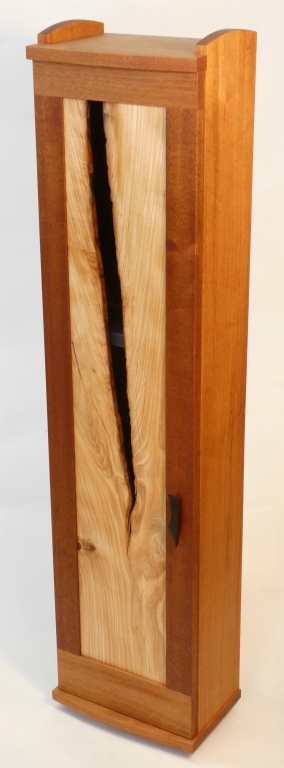
Cabinet Three-quarter view
As part of the ongoing development of the Sheila Hugh Mackay Collection of Strathbutler Award Winners curated by the New Brunswick Museum, a cabinet, Fractured, crafted by 2019 Strathbutler laureate, Bruce Gray of Kars, NB, was recently acquired. Kathryn McCarroll, Executive Director of the Sheila Hugh Mackay Foundation Inc. states, “We are honoured to play a part in building the Collection of Strathbutler Award Winners at the New Brunswick Museum. Our successful collaboration and ongoing commitment ensures the acquisition, documentation, preservation and interpretation of significant works by leading artistic talents of our age.”
Bruce Gray, creates exceptionally fine furniture that presents not only a philosophy but also a methodical working approach. For Gray, the title of this work, Fractured, is a reference to our current economic/social/cultural condition – though there is a deep divide, we are firmly connected at the root (panel bottom) and if one looks deeper, we share core values bridging the divide (shelves). So there is hope.
This cabinet, commissioned by the NBM, is meant to document Gray’s consummate skills as a master maker of cased furniture. It features a unique piece of elm from Fredericton with additional wood for the case, shelving and handle specially selected by the artist.
According to Gray’s 20 March 2021 artist’s statement, the origins and meaning of this cabinet are:
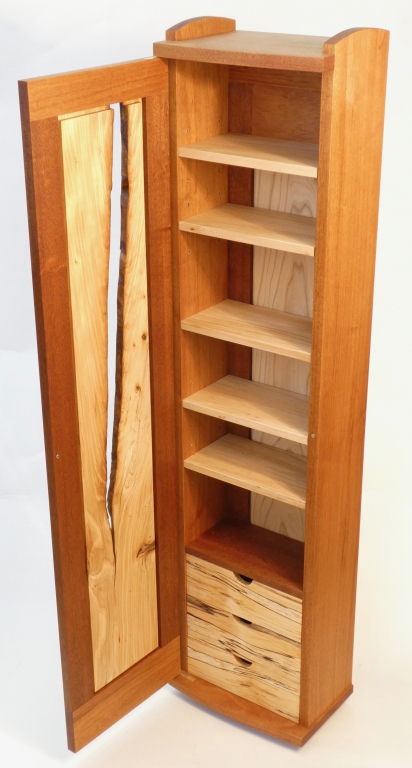
Cabinet Interior
As is typical of Gray’s work, its intent is to challenge public preconceptions of value. What is important and what should be discarded. What is flawed and what is special. The cabinet design is driven by the door panel, a formerly bark-filled crack within an elm tree. A part that forestry practices dictate to be discarded, is here honoured as the central focus of a work of art. The spalted (partly rotten) drawer faces inside echo this theme. Gray finds that natural materials, like people, often grow richer and more interesting with age.
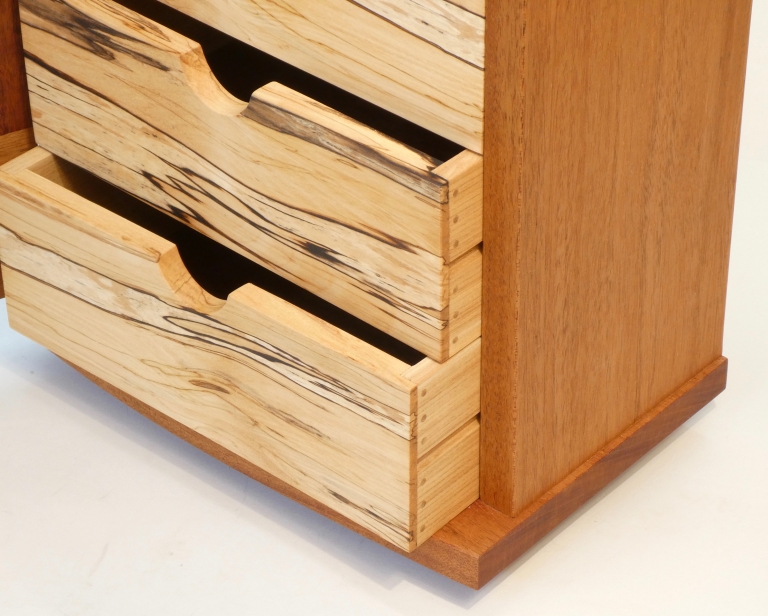
Cabinet Interior – Drawer Detail
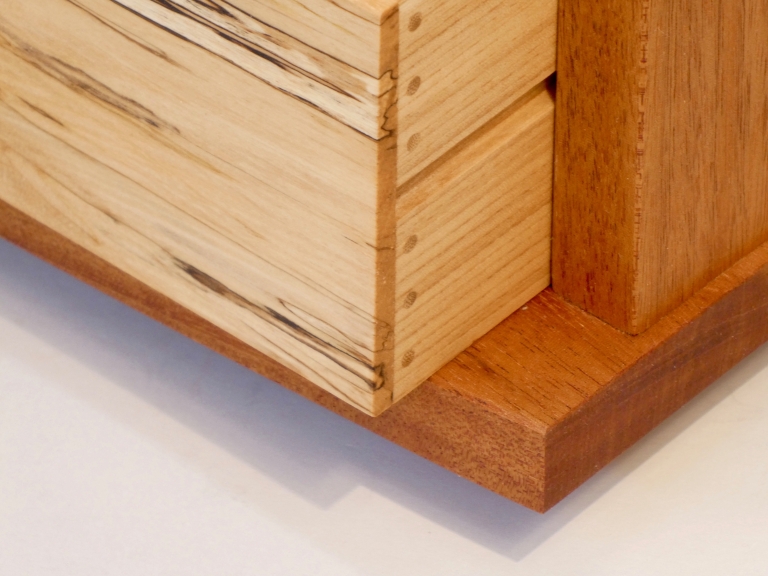
Cabinet Interior – Drawer Detail
A second theme of Gray’s work is deceptive simplicity. The focus of this work is the panel. The case is intended to be subservient and complementary, so it displays clean lines with hidden, internal joinery. Even the interior joins are hidden. The only exception are the drawers’ sides, only visible when pulled out. These joints are intended as a discovered treat. Simple, warm tone, inlaid brass knife hinges and shelf support hardware blend with the warm wood. Truly deceptively simple with clean, simple lines, but 179 parts.
A third consistent theme of Gray’s is practicality. It may be an art work, but it must also be able to be used. The adjustable shelves, set of drawers and pre-drilled hanging plate ensure the work’s functionality.
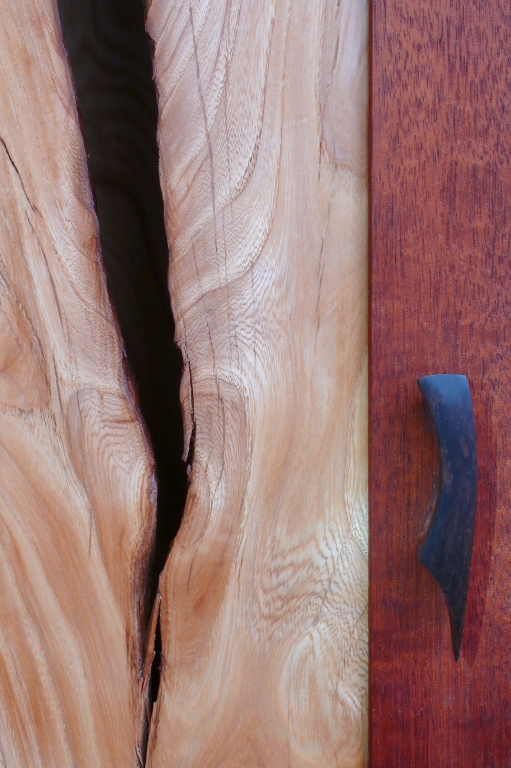
Cabinet Door Panel (Detail)
Handle design is a delight for Gray. Along with the drawer “handles”, the door handle is the only part of the work touched. It should be a pleasure to the eye, inviting to the hand and complement the larger work, and be fully functional. The door handle wood, bocote, was chosen to echo the colour of the inner edge of the crack. The upper edge is slightly bowed out echoing the bow front of the top and bottom as well as the top’s “ears”. The side curves and “tail” of the handle were designed to echo the crack.

Cabinet back
Thoroughness of execution is important to Gray. The materials and workmanship of the never-seen back are consistent with the remainder of the cabinet. The chosen back panel figure would serve well on the front of any fine work.
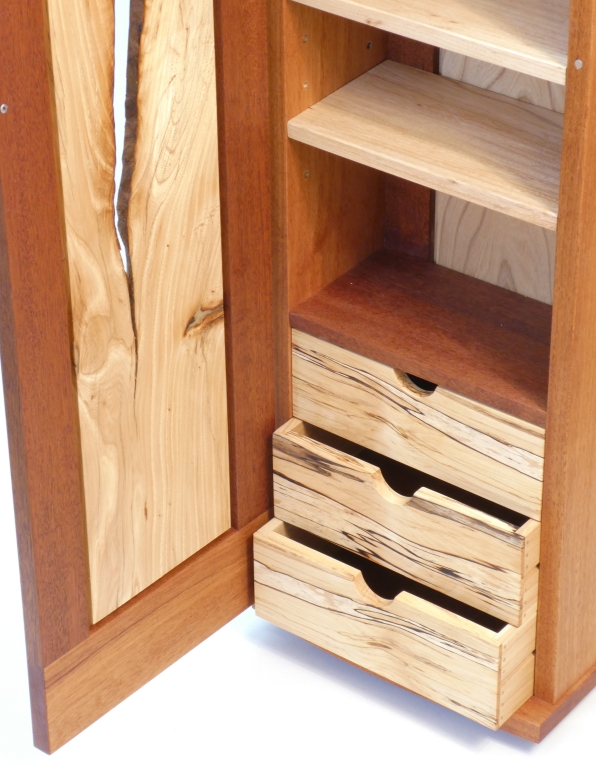
Cabinet Interior – Drawer Detail
The number three has great significance for Gray, hence the three drawers.
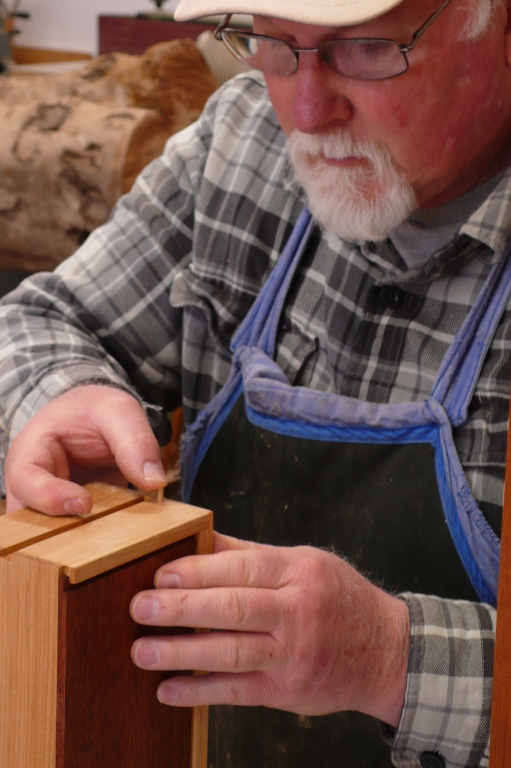
Bruce Gray assembling a drawer
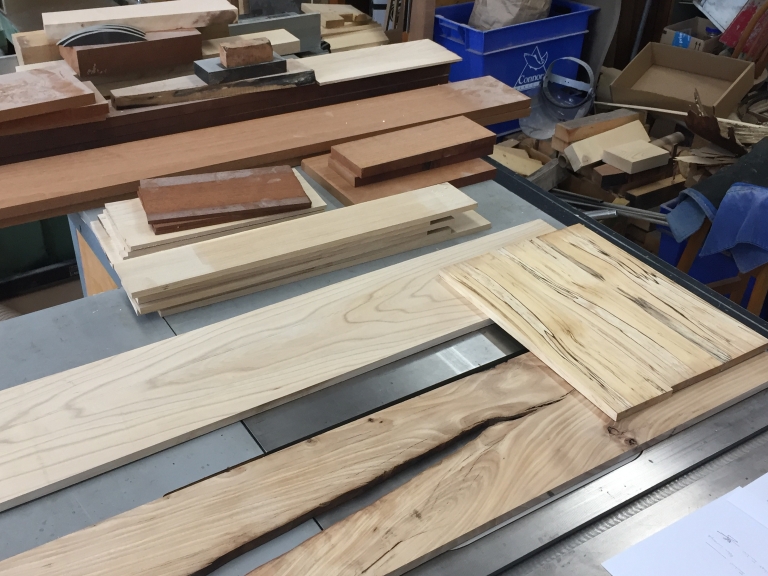
Cabinet pieces prior to construction
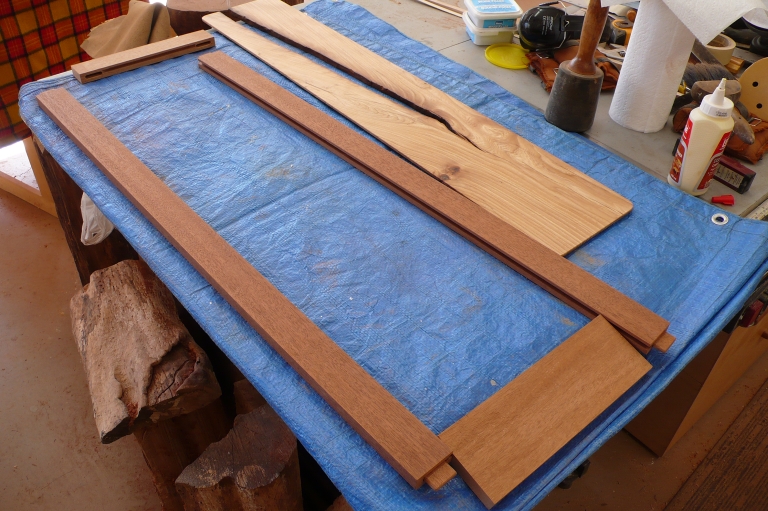
Assembling the door
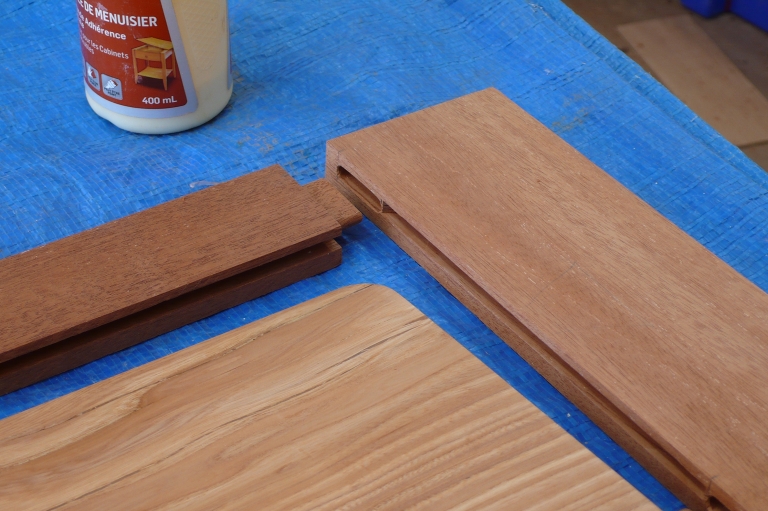
Assembling the door
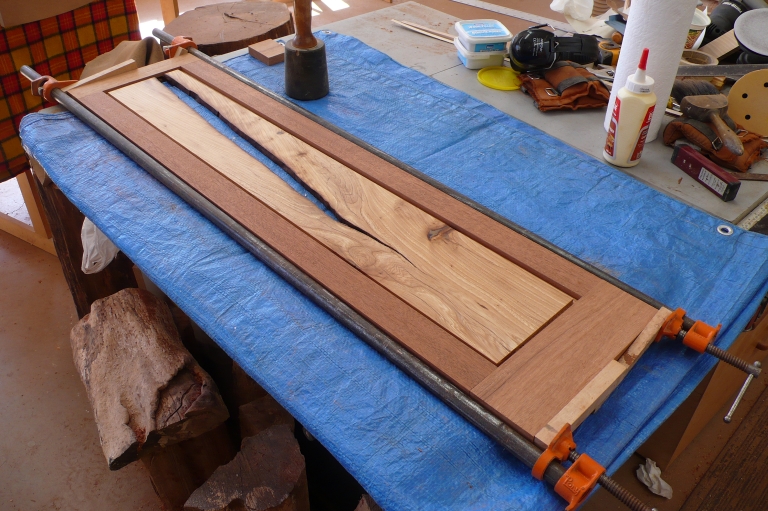
Assembling the door (Clamping)
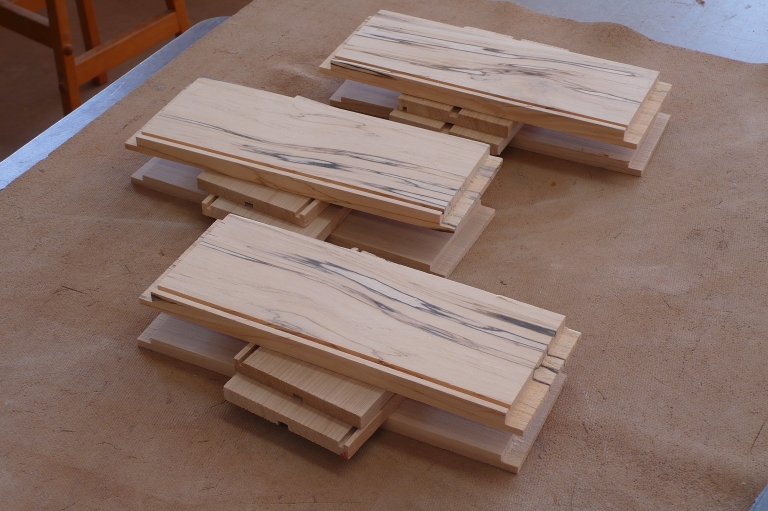
Drawers before assembly
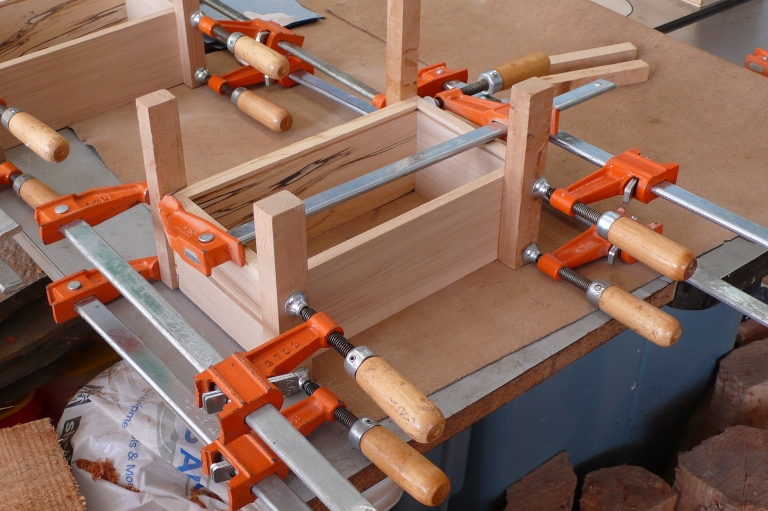
Drawer being clamped
Gray has a long record of producing exceptional cabinetry utilizing unique pieces of wood as the inspiration for the work. Just added to the New Brunswick Museum’s collection, this is the first 21st-century cased piece to represent the small but important group of fine furniture artisans of the province. It is an extremely high quality, contemporary iteration of a centuries-old tradition and craft in the province. Currently there is only one other piece of Gray’s cased furniture in the public domain. This piece complements another of Gray’s recent works, a coffee table Earth (2020), which was made from a unique piece of live-edge curly yellow birch that is accented with granite, sand and deer antler.
According to Peter Larocque, NBM art curator, “With the addition of Bruce Gray’s superbly crafted cabinet, Fractured, the New Brunswick Museum’s collection increases in importance. Not only does this piece enhance our representation of techniques, materials and approaches but it also strengthens our goal in documenting an outstanding legacy of craftsmanship.”
Photos credit: Bruce Gray
